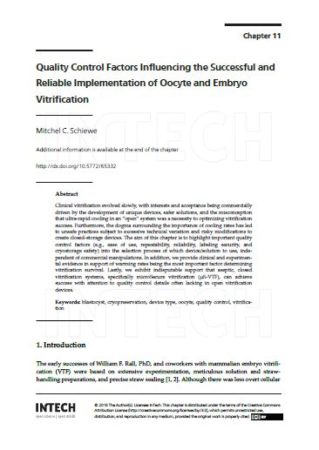 Clinical vitrification evolved slowly, with interests and acceptance being commercially driven by the development of unique devices, safer solutions, and the misconception
Clinical vitrification evolved slowly, with interests and acceptance being commercially driven by the development of unique devices, safer solutions, and the misconception
that ultra‐rapid cooling in an “open” system was a necessity to optimizing vitrification success. Furthermore, the dogma surrounding the importance of cooling rates has led
to unsafe practices subject to excessive technical variation and risky modifications to create closed‐storage devices. The aim of this chapter is to highlight important quality
control factors (e.g., ease of use, repeatability, reliability, labeling security, and cryostorage safety) into the selection process of which device/solution to use, independent
of commercial manipulations. In addition, we provide clinical and experimental evidence in support of warming rates being the most important factor determining
vitrification survival. Lastly, we exhibit indisputable support that aseptic, closed vitrification systems, specifically microSecure vitrification (μS‐VTF), can achieve
success with attention to quality control details often lacking in open vitrification devices.
Mitchel C. Schiewe